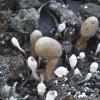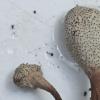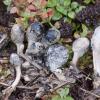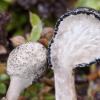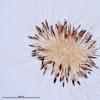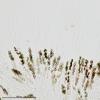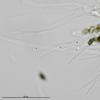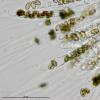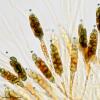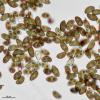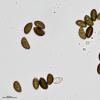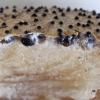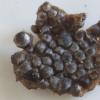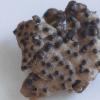
08-12-2025 18:59
 Lothar Krieglsteiner
Lothar Krieglsteiner
.. found by a seminar-participant, I do not know t

08-12-2025 17:37
 Lothar Krieglsteiner
Lothar Krieglsteiner
20.6.25, on branch of Abies infected and thickened

07-12-2025 16:07
Arnold Bû¥schlenHallo, ich habe in einer Moos-Aufsammlung (epiphy

16-03-2014 22:00
Hello,I found this species a few months ago but ha

08-12-2025 13:39
Thomas LûÎssû¡ehttps://svampe.databasen.org/observations/10572899

05-12-2025 17:33
 Bruno Couûˋ
Bruno Couûˋ
Bonjour, je serais heureux de recueillir votre avi

06-12-2025 00:19
 Viktorie Halasu
Viktorie Halasu
Hello,ô would anyone have this article, please? An
White Xylaria
Miguel ûngel Ribes,
08-02-2011 01:29
 Buenas noches
Buenas nochesTengo esta extraûÝa Xylariaceae de color claro de macaronesia (La Gomera), con dos colecciones: la primera con largos rizomorfos unidos a semillas de Beta vulgaris (espinaca vulgar) a nivel del mar, y la segunda sobre restos de Phoenix canariensis (palmera canaria). De 2-3 cm de altura.
Esta foto es de la primera colecciû°n.
Muchas gracias,
___________________________________________
Good night
I have this strange light Xylariaceae from Macaronesian (La Gomera), with two collections: the first with long rhizomorphs attached to seeds of Beta vulgaris (vulgar spinach)) at sea level and the second on the remains of Phoenix canariensis (Canary palm) . 2-3 cm height.
This picture is the first collection.
Spore measurements (1000x, water, fresh material)
(7.7) 8 - 9.1 (9.6) x (3.8) 4 - 4.5 (4.8) microns
Q = (1.6) 1.9 - 2.2 (2.4), N = 55
I = 8.5 x 4.2 microns, Qe = 2
Miguel û. Ribes
Miguel ûngel Ribes,
08-02-2011 01:31
Miguel ûngel Ribes,
08-02-2011 01:32
Miguel ûngel Ribes,
08-02-2011 01:37
Miguel ûngel Ribes,
08-02-2011 01:39
Jacques Fournier,
08-02-2011 10:04

Re:White Xylaria
Hi Miguel,
very nice find!
It fits well Podosordaria ingii, a fungus described from Gomera by Rogers & Laessoe in 1992 (Mycotaxon 44, 435-443). You can access this article through Cyberliber if you don't have it.
Because of its peculiar anamorph present on synnemata around stromata this taxon has been moved to Poronia as Poronia ingii (Rogers & Laessoe) Rogers, Ju & San Martin (Mycotaxon 67, 61-72).
Your collection seems in very good condition, as I never had the opportunity to study this species I would be very glad to have a part of it, including the conidial state. Thanks in advance!
Jacques
very nice find!
It fits well Podosordaria ingii, a fungus described from Gomera by Rogers & Laessoe in 1992 (Mycotaxon 44, 435-443). You can access this article through Cyberliber if you don't have it.
Because of its peculiar anamorph present on synnemata around stromata this taxon has been moved to Poronia as Poronia ingii (Rogers & Laessoe) Rogers, Ju & San Martin (Mycotaxon 67, 61-72).
Your collection seems in very good condition, as I never had the opportunity to study this species I would be very glad to have a part of it, including the conidial state. Thanks in advance!
Jacques
Peter Welt,
08-02-2011 12:21

Re:White Xylaria
Hi Jacques, hi Miguel,
I think also the macroscopic type is better suited to Pornia. In Podosordaria perithecia are never surrounded by a stroma. These are more or less individually attached at the stem.
At such a piece I am also very, very interested, for a planned processing of coprophilous species.
Peter
I think also the macroscopic type is better suited to Pornia. In Podosordaria perithecia are never surrounded by a stroma. These are more or less individually attached at the stem.
At such a piece I am also very, very interested, for a planned processing of coprophilous species.
Peter
Thomas LûÎssû¡e,
10-02-2011 10:14
Re:White Xylaria
Dear Miguel
I can only agree with Jacques and such nice pictures! On the other hand I think Peter is not right in assuming that there is no stromatic layer covering the perithecia in Podosordaria. I believe it is just a matter of thickness (as can been seen within Xylaria). I still have a couple of reprints if of interest (contact me on thomasl@bio.ku.dk)
cheers
I can only agree with Jacques and such nice pictures! On the other hand I think Peter is not right in assuming that there is no stromatic layer covering the perithecia in Podosordaria. I believe it is just a matter of thickness (as can been seen within Xylaria). I still have a couple of reprints if of interest (contact me on thomasl@bio.ku.dk)
cheers
Miguel ûngel Ribes,
10-02-2011 13:13

Re:White Xylaria
Thank you very much Jacques, Peter and Thomas, very friendly.
Jacques, I have obtain both papers, thanks. I will send you some samples.
Peter, please, give me your address and I will send you too. But I have read in that papers P. ingii is not coprohilous.
Perhaps these photos clarify about the stromatal layer covering the perithecia, at least in this species I think it is clear.
Best regards,
Miguel û. Ribes
Jacques, I have obtain both papers, thanks. I will send you some samples.
Peter, please, give me your address and I will send you too. But I have read in that papers P. ingii is not coprohilous.
Perhaps these photos clarify about the stromatal layer covering the perithecia, at least in this species I think it is clear.
Best regards,
Miguel û. Ribes
Miguel ûngel Ribes,
10-02-2011 13:15
Danny Newman,
20-12-2019 23:50

Re : White Xylaria
i wonder if the anamorph in the first image is of the Lindquistia type, and if so, if the tissues exhibit a reaction in the presence KOH.

